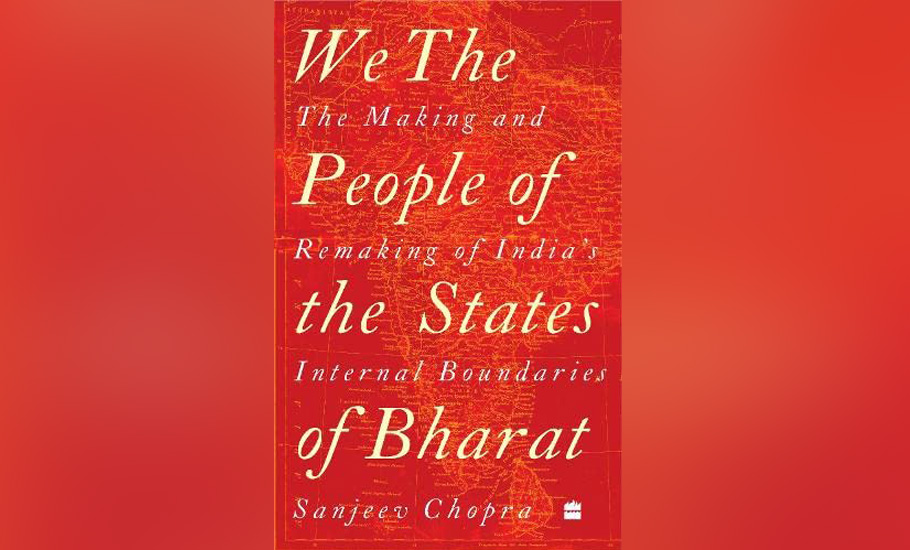
Book review: ‘We, the People of the States of Bharat’ — How India negotiates its boundaries
Sanjeev Chopra’s We, the People of the States of Bharat: The Making and Remaking of India's Internal Boundaries maps India's cartographic history — its multiple boundary adjustments since 1947

The long-pending border dispute between Karnataka and Maharashtra, which was again in news recently due to violent protests, would have been settled long ago if the concept of a bilingual state would have been accepted at the time of the reorganization of Indian states after the Partition in 1947.
In his recent book `We the People of the States of Bharat – The Making and Remaking of India’s Internal Boundaries,’ Sanjeev Chopra has given details of an interesting episode relating to West Bengal and Bihar that shine light on such disputes. There was the Roy-Sinha proposal which envisaged creation of a large state after the merger of West Bengal and Bihar.
The Roy-Sinha proposal: Bengal and Bihar merger
The proposal was supported by the chief ministers of Bengal and Bihar, B C Roy and Srikishna Sinha, respectively. It also had the support of Bihar and Bengal state assemblies, and the Union Cabinet. The proposal, however, did not succeed because of vehement opposition from provincial leaders in both the states on various counts.
The Communist Party of India was also opposed to the idea, but more significantly, opposition also came from the stalwarts of the UP Congress who felt that this would be the end of the permanent hold of UP over India’s polity. In any case, the proposal was never formally brought before the States Reorganisation Commission (SRC) for consideration.
Also read: Debunking Tipu Sultan’s Hinduphobia and other WhatsApp forwards
But if a bilingual state would have been created at that time, one can presume that Marathi-speaking people would have happily lived in several border areas of Karnataka, including Belagavi/Belgaum district, which has witnessed several clashes between Marathi- and Kannada-speaking residents after the SRC included Belgaum in Karnataka. Maharashtra has taken the matter to the Supreme Court for a final settlement.
The concept of bilingual states
One can safely assume that similar problems in other states such as Punjab and Gujarat would have also been resolved amicably if the concept of bilingual states would have been accepted. It did not happen mainly because Mahatma Gandhi, Jawaharlal Nehru, Sardar Vallabhbhai Patel, and Dr Ambedkar – the four leading lights of states’ unification and making of India a republic – preferred reorganization of states on linguistic lines.
All the four “were unanimous in their belief that acceptance of linguistic states would strengthen, rather than weaken, the unity and integrity of the country,” Chopra has emphasised in the book.
Chopra, who superannuated as the Director of the LBS National Academy of Administration after 36 years in the IAS, has produced a scholarly work on a complex subject in a simple and engaging way. The book tells the story of how our political leadership got down to working out international borders and integrating princely states and provinces into the Union of India after Independence.
It also narrates the fascinating tale of political intrigues, religious, cultural, linguistic, ethnic, economic and social considerations that influenced the creation and nomenclature of states, and how the country’s map kept changing ever after the Independence.
The integration of princely states
We all know that as the first Home Minister of India Sardar Patel played a stellar role in ensuring the integration of the princely states into the Indian Union. Chopra’s book, however, also gives due importance to the role of Patel’s trustworthy lieutenant VP Menon in India’s transition from a dominion to a republic. He also highlights the contribution of Hare Krishna Mahtab, who initiated the process by merging the small principalities of Orissa (as Odisha was then called).
Also read: Novelist as a vocation review: How Murakami animates the surreal world of his fiction
Among various achievements of Menon, two were very crucial. One, he drafted the Instruments of Accession and ensured that “all the princely states signed on the dotted line – both for the Instrument of Accession, as well as the Agreement on Merger…”
More importantly, the book points out, Menon ensured that “India chose to call itself the `Dominion of India’ instead of the `Dominion of Hindustan’ as preferred by an important section of the British establishment. The Dominion of India thus became the ‘natural successor’ state to British India – else Pakistan could have staked a claim to the territories held by Portugal and France, especially in pockets that had substantial Muslim populations.”
The first Hindi map of the country was published in 1952, in which, for the first time, China is shown as our neighbour on our northern border beside Tibet. Chopra’s book points out that by 1956, “Tibet disappeared from our cartographical imagination, and we were all parroting `Hindi Chini Bhai’… Tibet finally made a comeback in 1959.”
There is another interesting anecdote that the book highlights. As long back as in 1948, Ladakh wanted to be part of Lahaul-Spiti of the erstwhile Punjab state, which included Himachal Pradesh and Haryana. However, it was attached to Jammu and Kashmir. Perhaps that’s why when Article 370 and 35 A — that conferred special area status on Jammu and Kashmir — were abolished in August 2019 and Ladakh and J&K were declared as Union Territories, the Ladakh Buddhist Association (LBA) profusely thanked the Union government.

